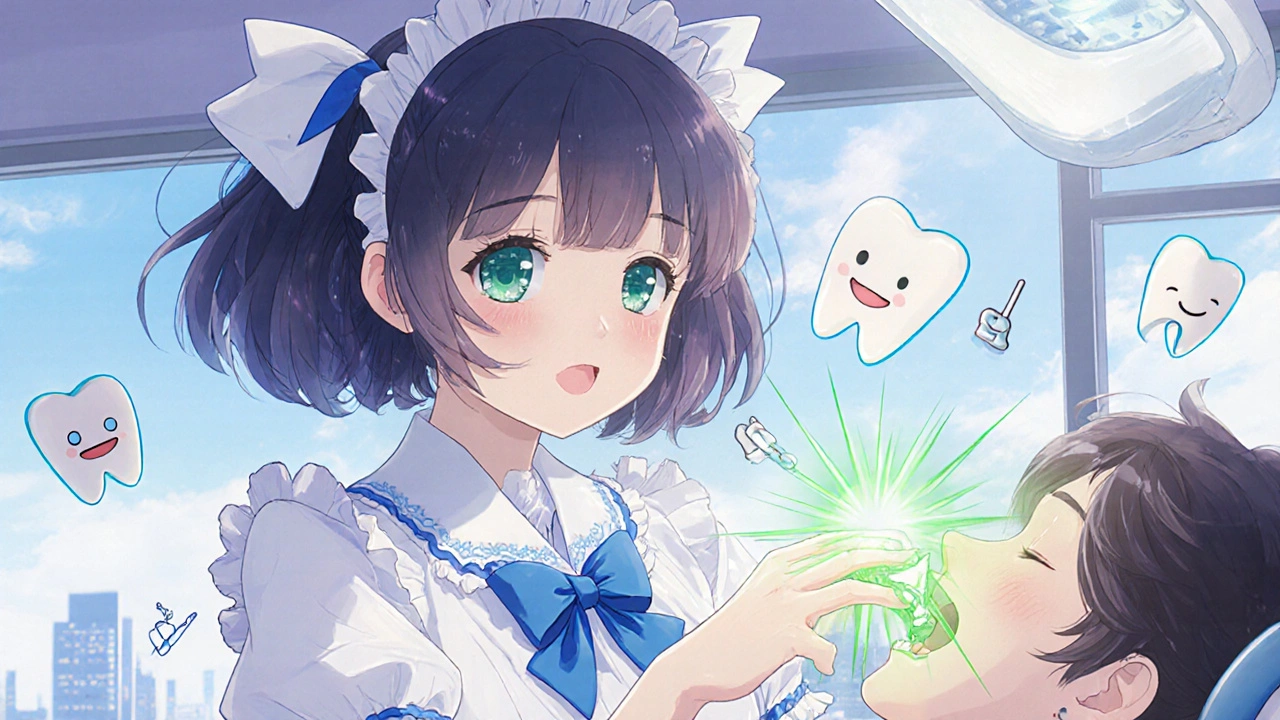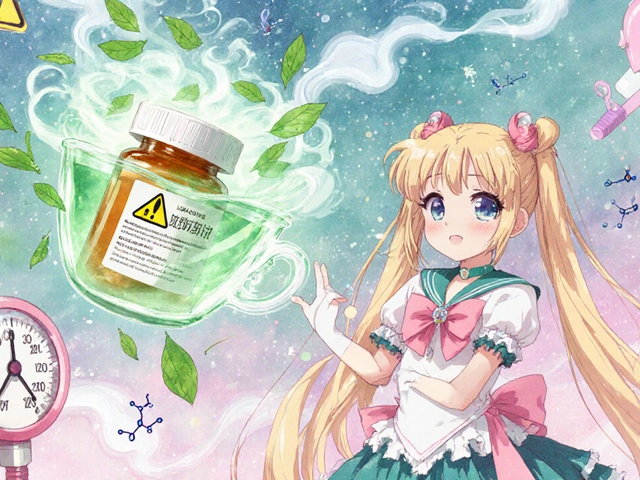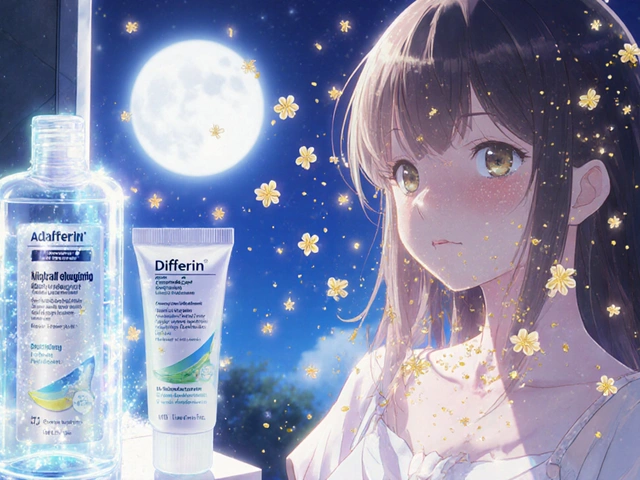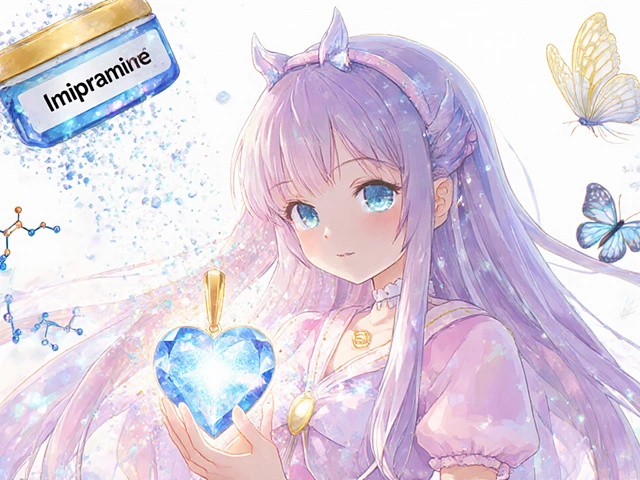When you’re told you have osteoporosis, the goal is simple: keep your bones strong so you don’t break a hip, spine, or wrist. For millions of people, that means taking a pill like alendronate (Fosamax), risedronate (Actonel), or getting an annual IV infusion of zoledronic acid (Reclast). These drugs are called bisphosphonates, and they work by slowing down bone breakdown. They’ve been shown to cut hip fracture risk by over 50% and spine fractures by nearly half. But somewhere in the back of your mind, you’ve probably heard the warning: “Can this cause jaw necrosis?” It sounds terrifying. And it’s real - but not nearly as common as you think.
What Exactly Is Jaw Necrosis?
Medication-related osteonecrosis of the jaw, or MRONJ, is when part of the jawbone becomes exposed and doesn’t heal. It’s not cancer. It’s not an infection you can catch. It’s a failure of the bone to repair itself, usually after a dental procedure like a tooth extraction. The bone dies because the drugs that stop bone loss also slow down healing. The condition was first clearly described in 2003, and since then, doctors have learned a lot about who’s at risk - and who isn’t.
The key thing to know: MRONJ is rare in people taking bisphosphonates for osteoporosis. Studies show the risk is about 0.7 cases per 100,000 people each year. That’s less than one in a million. Compare that to the risk of breaking a hip after a fall - which is around 1 in 5 for women over 80. The numbers don’t lie: the danger of not treating osteoporosis is far greater than the risk of jaw problems.
Why the Jaw? It’s Not Just Any Bone
Why does this happen in the jaw and not the hip or spine? It’s because the jaw is different. The bone there turns over 10 times faster than the bone in your leg or spine. That means it absorbs more of the drug. Plus, your mouth is full of bacteria. Every time you chew, you put pressure on your teeth and gums. If you have gum disease, loose teeth, or an infection, that’s a trigger. A simple extraction can turn into a slow-healing wound when bisphosphonates are in the system.
It’s not the drug alone. It’s the combination: a weakened healing response + poor oral health + a dental procedure. That’s the perfect storm. People who start bisphosphonates with untreated cavities or periodontal disease are at higher risk. That’s why dentists ask you to get a cleaning and fix any problems before you begin treatment.
Bisphosphonates vs. Denosumab: Which Is Riskier?
Not all osteoporosis drugs are the same. Denosumab (Prolia) is a newer option. It works differently - it blocks a protein that activates bone-breakdown cells. It’s very effective, just like bisphosphonates. But here’s the catch: studies show denosumab carries a slightly higher risk of MRONJ than oral bisphosphonates. One analysis found it’s about 1.7 to 2.5 times more likely to cause jaw necrosis. Why? It’s stronger at suppressing bone turnover, and it doesn’t stick around in the bone as long. That means if you stop it, your bone breaks down fast. That sudden change can trigger problems, especially after dental work.
But here’s the real kicker: both drugs are far safer than the alternative - breaking a bone. The fracture risk reduction is nearly identical. So if your doctor offers you Prolia instead of Fosamax, don’t panic. Talk about your dental history. Ask if you’ve had any recent infections or planned extractions. That’s what matters more than the drug name.

IV vs. Oral: Big Difference in Risk
Not all bisphosphonates are created equal. The IV versions - like zoledronic acid - are given in high doses, usually once a year. These are the same drugs used in cancer patients to stop bone metastases. In cancer care, MRONJ happens in up to 12% of patients. But for osteoporosis? The dose is lower, and the risk drops dramatically.
For oral bisphosphonates - the kind you swallow once a week - the risk is extremely low. A study of over 260,000 osteoporosis patients found no increased risk of jaw necrosis compared to people not taking the drug. That’s right: no increased risk. The fear is mostly based on cases from cancer patients, not people taking pills for thinning bones.
Still, if you’re on an IV infusion, the risk is real. A 2024 study showed that if you stop zoledronic acid for more than a year before a tooth extraction, your risk of MRONJ drops by 82%. But here’s the trade-off: stopping the drug increases your fracture risk by 28%. So you’re trading one danger for another. That’s why doctors don’t just tell you to quit the drug. They weigh the risks carefully.
What Should You Do Before and During Treatment?
You don’t need to avoid the dentist. You need to be smart about it.
- Get a full dental exam before starting bisphosphonates. Fix cavities, treat gum disease, remove problem teeth. Do this before the first pill or infusion.
- Keep up with cleanings every six months. Tell your dentist you’re on a bisphosphonate. They don’t need to scare you - they just need to know so they can avoid unnecessary extractions.
- Never skip brushing or flossing. Good oral hygiene is your best defense.
- If you need a tooth pulled, don’t delay. The longer you wait, the more likely you are to develop an infection that could trigger MRONJ.
- Don’t stop your medication without talking to your doctor. Even if you’re worried, stopping increases your fracture risk faster than you think.
Many dentists now know the real numbers. They’re not refusing to treat you. They’re just being cautious. If a dentist says, “I can’t do this because you’re on Fosamax,” ask them if they’ve seen this happen in osteoporosis patients. Chances are, they haven’t.

Real Stories, Real Risks
Some people do develop MRONJ. One woman on a patient forum said she had exposed bone after a routine cleaning. It took 18 months of antibiotics and surgery to heal. That’s heartbreaking. But she’s one in hundreds of thousands.
Another person on Reddit said they’d been on Fosamax for 22 years, had multiple extractions and implants, and never had a problem. Their dentist called them the exception. But maybe they’re not. Maybe they’re the norm.
Surveys show 87% of osteoporosis patients worry about jaw necrosis before dental work. But only 2.3% ever actually get it. That’s fear outpacing facts. The real danger isn’t the drug - it’s avoiding dental care because you’re scared.
The Bigger Picture: Fracture Risk Still Wins
Let’s put this in perspective. One in two women over 50 will break a bone due to osteoporosis in their lifetime. A hip fracture means a 20% chance of dying within a year. Many never walk again. The drugs that prevent this - bisphosphonates - have been used safely by millions for over 25 years.
The FDA added warnings about jaw necrosis in 2004. But they didn’t pull the drugs. They kept them on the market because the benefits are undeniable. The American Dental Association says the risk of fracture from untreated osteoporosis is far greater than the risk of MRONJ. That hasn’t changed.
And now, new research is making things even clearer. A 2024 study showed that stopping IV bisphosphonates for a year reduces jaw necrosis risk - but only if you’re not at high risk for fractures. For most people, that’s not worth it.
What’s Next? Personalized Treatment
Doctors aren’t done learning. Right now, there are clinical trials testing if we can use blood or urine markers to find who’s most likely to develop MRONJ. Maybe one day, you’ll get a simple test that says, “You’re low risk - keep taking your pill.” Or, “You’re high risk - let’s switch you to a different drug.”
For now, the advice is simple: treat your osteoporosis. Take your medication. Keep your mouth healthy. Talk to your doctor and dentist together. Don’t let fear stop you from living without broken bones.
The truth? You’re far more likely to break a hip than to get jaw necrosis. And if you do get jaw problems? Most cases can be managed - especially if caught early. Don’t ignore your teeth. Don’t skip your meds. Just stay informed, stay proactive, and trust the science - not the scare stories.






Comments
Dana Dolan
November 20, 2025 AT 14:32 PMOkay but can we talk about how scary it is when your dentist looks at you like you’re carrying a live grenade just because you’re on Fosamax? I got a cleaning last year and they practically handed me a hazmat suit. Meanwhile, my grandma broke her hip falling out of bed and now she’s in a wheelchair. Which one’s the real threat? 😅
Frank Dahlmeyer
November 22, 2025 AT 08:31 AMLook, I’ve been on alendronate for seven years now, had three extractions, two crowns, and a full set of implants, and my jaw is still attached. I’m not some miracle worker - I just followed the damn rules. Got my teeth sorted before I started the meds, brushed like my life depended on it (because it kinda did), and told every dentist I’ve ever had that I’m on bisphosphonates. No drama. No horror stories. Just common sense. The fearmongering online is worse than the actual risk - which, by the way, is statistically closer to getting struck by lightning than to developing MRONJ. Stop scrolling doom threads and go floss. Your future self will thank you.
Timothy Reed
November 22, 2025 AT 14:32 PMThe data is clear: the benefits of bisphosphonates in reducing fracture risk far outweigh the extremely low incidence of medication-related osteonecrosis of the jaw. For patients with moderate to high fracture risk, discontinuation of therapy based on unfounded fears is clinically inappropriate. Dental screening prior to initiation and routine oral hygiene maintenance remain the cornerstone of risk mitigation. Collaboration between physicians and dentists is essential, and patient education should be grounded in evidence, not anecdote.
Christopher K
November 23, 2025 AT 16:16 PMOh great, so now we’re supposed to be scared of our own jawbones because Big Pharma decided to throw in a tiny warning label? 🤡 I’ve got news for you - if you’re too scared to take a pill because you might get a sore tooth, you probably shouldn’t be driving, either. The real crisis is that people now think a 0.0007% risk is worth avoiding a drug that prevents them from becoming a human Popsicle after a fall. Wake up. The only thing necrotic here is your critical thinking.
harenee hanapi
November 24, 2025 AT 12:42 PMMy aunt got MRONJ and she cried every night for six months. They had to scrape her jawbone with a spoon. SIX MONTHS. And now you’re telling me it’s ‘rare’? What does that even mean? Rare for who? For you? I bet you don’t even know what a mandible is. And don’t say ‘fracture risk’ - my aunt didn’t break a hip, she broke her spirit. And now you want me to just… take the pill? Like it’s a candy? 😭
Christopher Robinson
November 25, 2025 AT 21:27 PMJust want to say - I’ve been on Reclast for 4 years, had two wisdom teeth pulled, and zero issues. 🤝 My dentist actually gave me a high-five after my last checkup because I’m ‘low risk’ and ‘well-managed.’ The key? Communication. Tell your dentist. Brush. Floss. Don’t ignore cavities. And if you’re worried? Ask your doc about a drug holiday - but only if you’re not high-risk for fractures. It’s not magic, it’s just being smart. 🙌
James Ó Nuanáin
November 27, 2025 AT 06:02 AMIt is an incontrovertible fact, derived from peer-reviewed epidemiological studies published in The Lancet and the Journal of Bone and Mineral Research, that the incidence of MRONJ in osteoporotic patients receiving oral bisphosphonates is approximately 0.7 per 100,000 patient-years - a figure so statistically negligible as to be functionally irrelevant when weighed against the 50% reduction in hip fracture risk. To permit fear to supersede evidence is not merely irrational - it is a dereliction of personal responsibility. One must, therefore, act with intellectual fortitude.
Nick Lesieur
November 28, 2025 AT 06:43 AMSo let me get this straight - you’re telling me I can’t get a tooth pulled without becoming a medical case study? 🙄 And I’m supposed to trust a pill that’s been around since the 80s? My uncle took this stuff and his jaw started falling apart. He didn’t even have a tooth pulled - just… ate an apple. Now he’s got a metal plate in his face. You think that’s normal? Nope. It’s a scam. They don’t want you to know that the real cure is calcium and sunshine, not corporate chemicals. 🤫
Angela Gutschwager
November 29, 2025 AT 17:40 PMJust get your teeth checked before you start. Done. 😑
Andy Feltus
December 1, 2025 AT 14:05 PMIt’s funny how we treat medicine like a villain in a superhero movie - ‘This pill will save your bones… but at what cost?’ But here’s the real twist: the cost of doing nothing is death. Or worse, a lifetime in a wheelchair. The jaw necrosis scare is just the plot device the fear industry uses to distract us from the real villain: aging, inactivity, and denial. Maybe the real question isn’t ‘Should I take it?’ - it’s ‘Am I willing to live with the consequences of not taking it?’
Dion Hetemi
December 2, 2025 AT 15:36 PMLet’s be real - most people who get MRONJ were already smoking, diabetic, or had untreated periodontitis. You’re not getting this from the pill. You’re getting it from ignoring your mouth for 10 years and then blaming the drug. I’ve seen 3 cases. All of them had 12 missing teeth and never seen a dentist since 2007. The drug isn’t the problem. The avoidance is. Stop being a victim. Start being a patient who takes care of their body.
Kara Binning
December 4, 2025 AT 03:09 AMMy sister took Prolia and ended up with a hole in her jaw. They had to remove half her chin. She’s 52. She didn’t even have a tooth pulled - just a deep cleaning. Now she can’t smile. You think that’s ‘rare’? It’s not rare if it happens to someone you love. And now you want me to just… keep taking it? Like it’s a vitamin? I’m sorry, but I’d rather break a hip than become a cautionary tale with a metal plate in my face. 💔